So many of our plants are mostly looking sad and dry after such a long, hot, dry spell, but along the cliff tops and the coastal dunes there are a few interesting plants to look out for.
Coast Everlasting Ozothamnus turbinatus is developing clusters of creamy-yellow tubular flowers. Its bright green foliage stands out in its exposed and often dangerous locations. Last year I saw lots of beautiful moths on them so hopefully they may return this year.
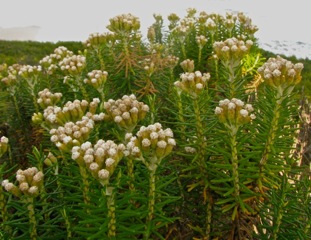
Coast Everlasting
Also the robust Coast Sword-sedge Lepidosperma gladiatum has been bearing compact brown flower-heads for some time. The clumps of large, flat, sword-like leaves are an important feature of our coastal vegetation.

Coast Sword-sedge
Have a look out for the seed-pods and berries being produced by many plants. I have been very sad to see the robust and common Seaberry Saltbush Rhagodia candolleana, having heat problems. The sprays of dark red berries are usually soft and juicy, but this year the berries, which are exposed to the sun, are looking much drier than usual.
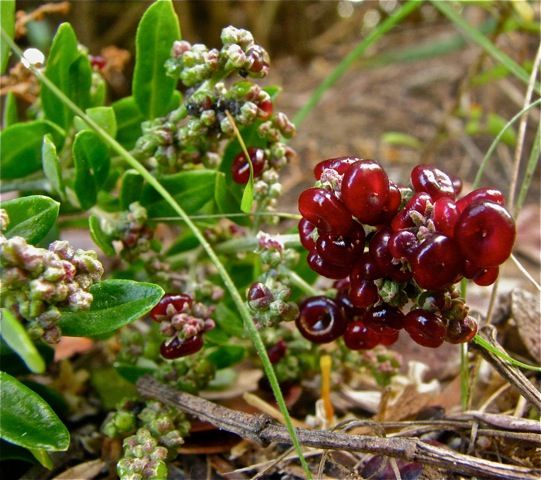
Seaberry Saltbush
Nodding Saltbush Einadia Nutans has arrow-shaped leaves which look a bit like the Seaberry Saltbush leaves. If you look closely in amongst the masses of leaves of this sprawling, wiry, ground –hugging plant, you may find eye-catching small soft bright red berries hiding in amongst the foliage.
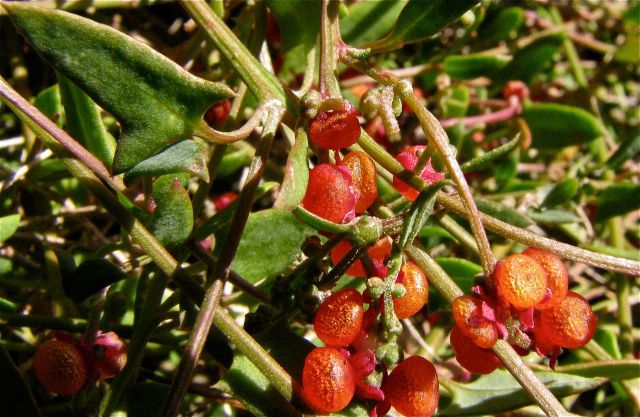
Nodding Saltbush
A new find for me has been seeing the brown, crowded, cup-shaped seeds of the Large-leaf Bush-pea Pultenaea daphnoides.

Large-leaf Bush-pea
I like to visit waterways for respite from the heat and sorry-looking plants. Creeping Monkey-flower Mimulus repens, a favourite of mine, may be found flowering in exposed mud flats. This prostrate plant has the most delightful and delicate mauve flowers.
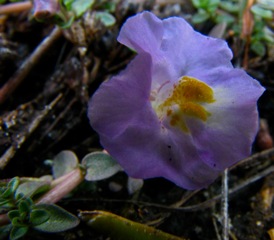
Creeping Monkey-flower
The Allen Noble Sanctuary is a sea of pink due to the massed flowering of Slender Knotweed Persicaria decipiens. The small pink flowers grow in long, slender, often paired spikes, at the ends of the stalks.

Slender Knotweed
This plant may be mixed with large areas of the more upright, shin-height, Austral Brooklime Gratiola peruviana. The thick, fleshy stem has paired, succulent, toothed, ovate leaves, with a cluster of smaller leaf-life structures in the axils. The single, five-petalled, white/pink stalkless flowers have notched petals and grow in axils at the end of the stalks. This plant was possibly used as a purgative by aborigines.
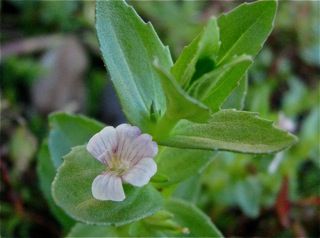
Austral Brooklime
Many sedges and rushes are worth a close look. Sea Rush Juncus kraussii subsp. australiensis is bearing flowerheads which are clustered and branched towards the end of the flower stems. This common plant of our coastal wetlands has straight, tough, pointed leaves with pithy centres.

Sea Rush
Remember to carry ‘Flowers of Anglesea and Aireys Inlet’. Best of luck!
Ellinor Campbell